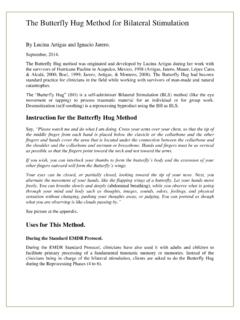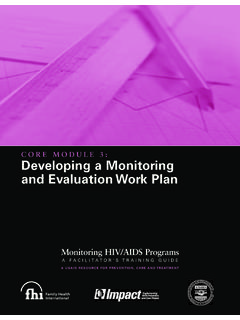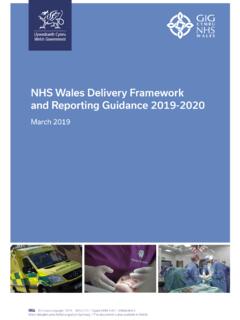Transcription of HANDOUT #1 The EMDR Recent Traumatic Episode Protocol …
1 1 The EMDR Recent Traumatic Episode Protocol (EMDR R-TEP) for early EMDR Intervention (EEI) Overview & Protocol instructions Elan Shapiro & Brurit Laub (revised Sept. 2014) EMDR R-TEP is a comprehensive current trauma focused Protocol for EEI that incorporates and extends the existing EMD and Recent Event protocols together with additional measures for containment and safety. The EMDR R-TEP usually requires 2-4 sessions , which can optionally be conducted on successive days. GLOSSARY of KEY TERMS 1- Traumatic Episode (T- Episode ) The original Traumatic incident together with its aftermath is viewed as an on-going trauma continuum while the experiences are not yet adaptively processed. The T- Episode comprises multiple targets of disturbance. These Target fragments are referred to as Points of Disturbance (PoDs), from the original incident until today.
2 2- Episode Narrative + continuous BLS (Bi-Lateral Stimulation) The Episode Narrative is telling the story of the Traumatic Episode out loud with continuous BLS which helps to ground and contain affect. This initial processing begins to integrate the gaps of the fragmented Traumatic story. In phases I & II recounting the details of the trauma is discouraged to avoid premature activation Option: Using a distancing metaphor, screen, gives additional containment if needed. 3- Google Search (G-Search) or Scan The G-Search is a mechanism to identify the various Points of Disturbance (PoD) by non- sequential scanning of the T- Episode , without talking, together with BLS. 4- Focused Processing1: A two strategies approach EMD <!EMDr EMD strategy: Narrow focused processing of the PoD by limiting the range of associations to the PoD.
3 This is a brief strategy, particularly effective with intrusive image/sensation fragments. EMDr2 strategy: Wider focused processing of the PoD, by going with the AIP chains of associations relating to the T- Episode . This is usually the main strategy. E Shapiro & Laub 2014 1 Previously called Telescopic Processing 2 Term after Roy Kiessling. HANDOUT #1 2 Overview: Adapted 8 Phases Phase I: HISTORY /INTAKE, brief history taking, evaluate readiness Phase II: PREPARATION, attention to safety & containment Points of Disturbance (PoD) level: Identification, assessment and Focused Processing of target fragments (PoDs) within the Traumatic Episode 1. Traumatic Episode Narrative + continuous BLS (Bi-Lateral Stimulation) -telling the story of the Traumatic Episode out loud with BLS.
4 2. Episode Google- Search + BLS (identifying Points of Disturbance (PoD) relating to the T- Episode from the original incident until today) 3. Assessment (phase III) of each PoD (Point of Disturbance) identified from G-Search 4. Focused Processing (Desensitization- phase IV): 2 strategies approach (EMD <!EMDr) 5. Installation (phase V) if SUD is ecological (no BODY SCAN (phase VI) yet) 6. Repeat steps 2-5 to identify & process remaining PoDs, until none found 7. A strong Closure (phase VII) at end of each session Episode level Check Episode SUD INSTALLATION of Episode PC (phase V) Episode BODY SCAN (phase VI) CLOSURE of Episode (VII) FOLLOW UP (VIII) E Shapiro & Laub 2014 3 EMD strategy Narrow focus (only going with associations relating to PoD) EMDr strategy Wider focus (only going with associations relating to T- Episode ) EMDR strategy Broad focus (going with associations relating to whole of life) Focused Strategy Approach EMD <-> EMDr (.)
5 EMDR) Point of PoD Disturbance E Shapiro & Laub 2011 65 T- Episode EMDR R-TEP Flow chart G-SEARCH 1 P O DFocused P R O C E S S I N G SUD ecological New G-Search EMDr EMD new G-S 2 P O Dnew G-S 3 Episode SUD ecological Episode level INSTALLATION Episode -PC BODY SCAN CLOSURE FOLLOW UP EMDr EMD EMDr EMD G-S 4 P O DNo more Points of Disturbance (PoDs) SUD ecological New G-Search EMDR%Proceed'to'work'with'the'EMDR'Proto col'with'client'consent''If Episode SUD not ecological E Shapiro & Laub 2011 37 SUD ecological New G-Search 4 E Shapiro & Laub 2011 EMDr strategyEMDr strategyTT-- Episode Focused processingEpisode Focused processingT-EpisodeA4A3A2A1 Associationrelates to T- Episode (or is adaptive/positive)Associationsrelate to T-EpisodeWhen associationdeparts fromT- Episode (Opens other clinical issues), or after 2 -3 positive/adaptive ones, go Back to Target (BTT) & check SUDP oint of DisturbancePoD (Target Fragment)PoDPoDE Shapiro & Laub 2011 68 EMD strategy (Zoom In) Point of Disturbance (PoD) Focused processing T- Episode A3 A2 A1 Association directly relates to PoD Association directly relates to PoD.
6 When association departs from PoD, go Back to Target (BTT) & check SUD Point of Disturbance PoD (Target Fragment) Return to PoD & check SUD frequently PoD PoD PoD E Shapiro & Laub 2011 53 5 COMPARISON TABLE Standard EMDR Protocol vs. R-TEP Standard EMDR Protocol EMDR R-TEP Phase I History Full Intake 3 Pronged orientation Past Present Future. Targets identified for treatment plan Briefer Intake history: to assess SMS (Severity/Motivation/Strengths), Therapy contract has current Trauma Focused priority. Concept of T- Episode Only general information about the T initially (details only requested later during Episode Narrative + BLS) Phase II Preparation: Safe Place (More if needed) Extended preparation 4 Elements (includes Safe Place), Resource Connection. Phase III Assessment Target: Event Image; NC; PC; VoC; Emotion; SUD; Body a) Episode Narrative + BLS b) G-Search with BLS to identify Target fragments /Points of Disturbance (PoD).
7 C) FOR EACH PoD: Image; NC; PC; VoC; Emotion; SUD; Body Phase IV Desensitization Processing with BLS No limitations of association as long as there is change Focused Processing : 2 main strategies of expanding focus of associations, EMD<!EMDr EMD processing of intrusive fragments EMDr- the main strategy EMD strategy Narrow focus going only with associations relating to the PoD but returning to Target (PoD) & checking SUD when it departs from PoD. If SUD stuck after 6 sets expand naturally into EMDr strategy ! EMDr strategy Wider focus allowing associative chains relating to the T- Episode If SUD stuck consider narrower EMD strategy focus & interweaves Phase V Installation Install PC when SUD 0/1 Install PC (for each Target when SUD is ecological) Phase VI Body Scan Body Scan No Body Scan until all the targets of the T- Episode processed Phase VII Closure Closure Strong closure at the end of each session (usually requires several sessions ) Phase VIII Reevaluation next session Check for remaining PoDs using G-Search at next session.
8 Follow-up at end. 6 EMDR R-TEP Protocol INSTRUCTIONS The special circumstances of early interventions requires sensitivity and flexible application of the Protocol guidelines. Phase I: INTAKE (evaluate readiness) SMS ratings Obtain as much client history as is reasonable in the circumstances to get an idea from the client or from others, of previous functioning, prior trauma history, observe response to Phase II calming exercises etc., sufficient information to estimate SMS ratings on a 5 point scale 1-5 Lo to Hi (S=Severity, M=Motivation, S=Strengths). In addition to the nature of the trauma, gauge risk factors & decide whether it is appropriate to proceed with EMDR processing with this client at this time. If possible administer the PCL 5 as part of the evaluation. Summary of SMS ratings based on all information obtained & clinical impression S=Severity (Lo) 1 2 3 4 5 (Hi) M=Motivation (Lo) 1 2 3 4 5 (Hi) S=Strengths (Lo) 1 2 3 4 5 (Hi) Phase II: PREPARATION (attention to safety & containment) In early EMDR Intervention, clients are likely to be easily flooded with states of high arousal and distress.
9 Therefore phase II preparation is particularly important for establishing sufficient safety and containment to enable starting to work on the Protocol . In all cases start with teaching self stabilisation and resource exercises such as: The 4 Elements, Safe place, and Resource Connection, for calming and enhancing control. Therapy contract: priority will be given to maintaining a Recent trauma focus. Consent will be requested if it is found necessary to broaden the intervention to regular EMDR. E Shapiro & Laub 2014 7 Explanation EXPLANATION: The work we will do here is designed to focus on your Recent difficult experiences with the aim to help your natural system digest the parts that are still disturbing so that you can regain your balance. Let whatever comes to mind come up.
10 Sometimes I will ask you to go back to a certain part of the memory, to let your system process and digest that piece. It is like Zooming In, or Out, which can help you focus observe and process your memories and experiences, so that past and present are not confused and you can begin feeling calmer, safer and more in control. Focused Processing at Points of Disturbance (PoDs) level Identification, assessment & processing of each PoD within the Traumatic Episode one at a time. (Phases III, IV, V & VII -no VI) 1. T- Episode Narrative + continuous BLS (Bi-Lateral Stimulation) Telling the story of the Traumatic Episode (T- Episode ) out loud with BLS, from the original incident until today, including disturbing thoughts about the future, which need to be processed. Option: Using a distancing metaphor, screen, gives additional containment.






